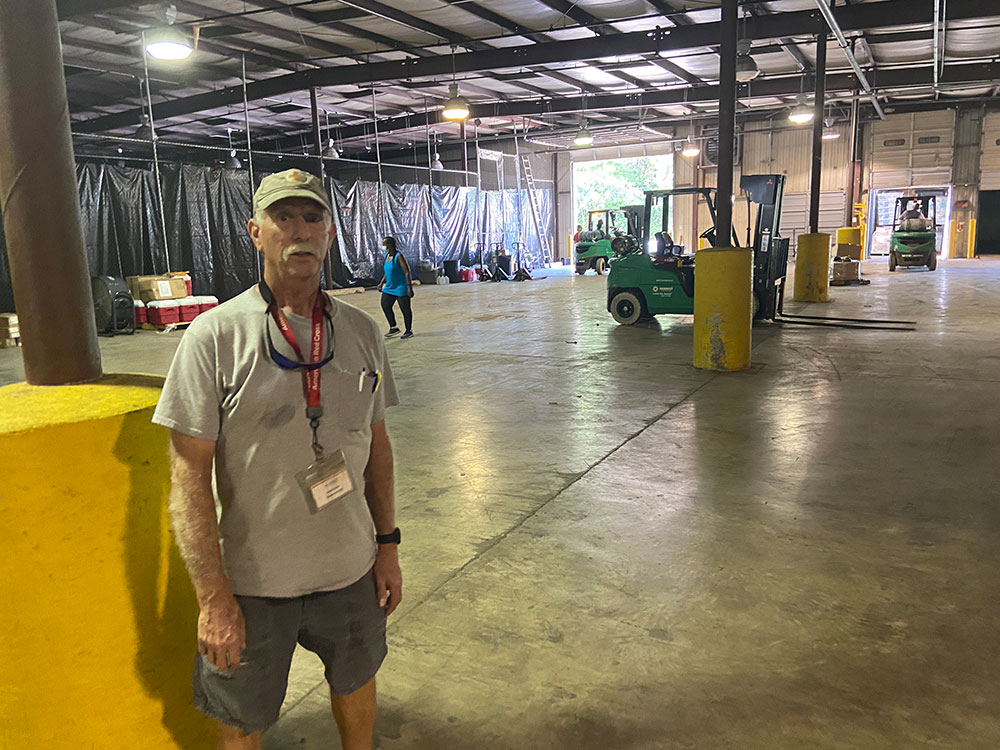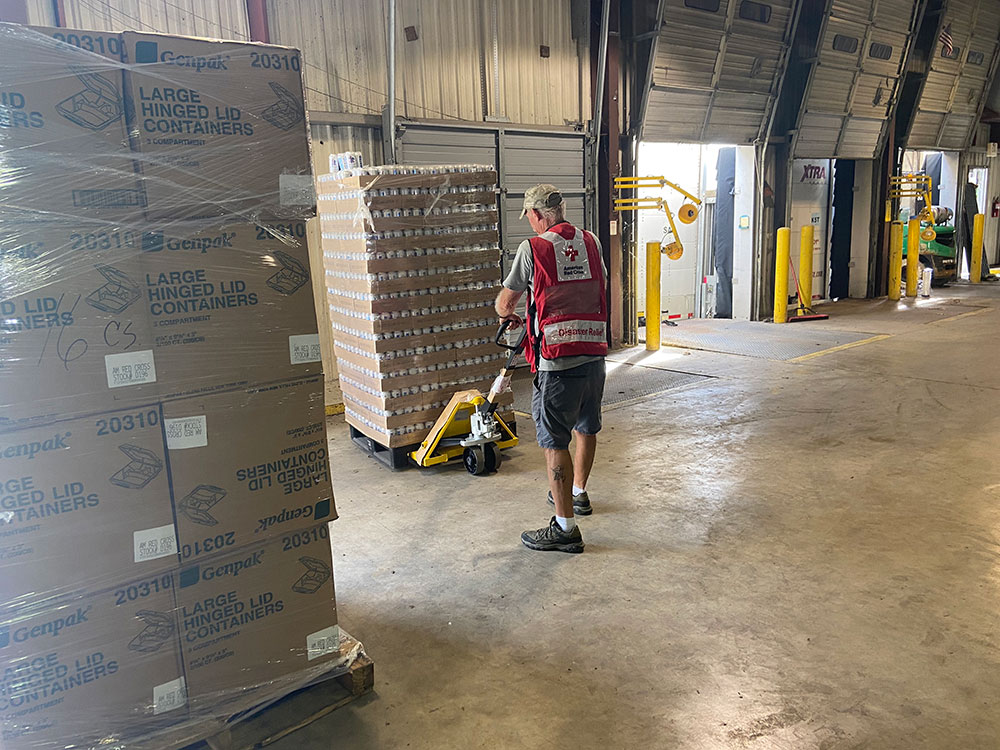

Story by Kim Mailes, Communications Volunteer
When you spend your career as a firefighter, you don’t think of it as basic training future volunteer service. When you drive a truck on your days off from the firehouse, you don’t think of it as background preparation for logistics management. But for Mike Nolan, a Central Florida Red Cross volunteer, that’s exactly what happened.
In the summer of 2022, deadly flooding across Eastern Kentucky destroyed hundreds of homes. Mike deployed to serve as warehouse manager -- a role he knows extremely well -- coordinating the purchasing, receiving, handling and dispatching of emergency relief supplies to thousands of people impacted by the disaster.
The key to success, he says, is flexibility. “We arrived shortly after the disaster, and we’ve been working out of trailers since. My team about killed themselves yesterday battling the record heat -- but I’m really proud of them, because we got it done.”
Working as a first responder during his firefighting career prepared Mike for the organized chaos that’s involved in setting up a warehouse for a Red Cross disaster relief operation. During the first forty-eight hours, trucks are at the dock constantly as Mike’s crew unloads shipments of non-perishable food items, bottled water, emergency relief supplies, clean up kits, and all the rest of what it takes to help people who've lost everything.
“If we don’t get the stuff out,” Mike said, “nobody gets anything.”
Mike and his crew may not make the headlines. They operate largely behind the scenes. But warehouse managers like Mike and teams of volunteers get the emergency supplies where they need to go. It's a valuable piece of the "big machinery" it takes to make a disaster operation work.